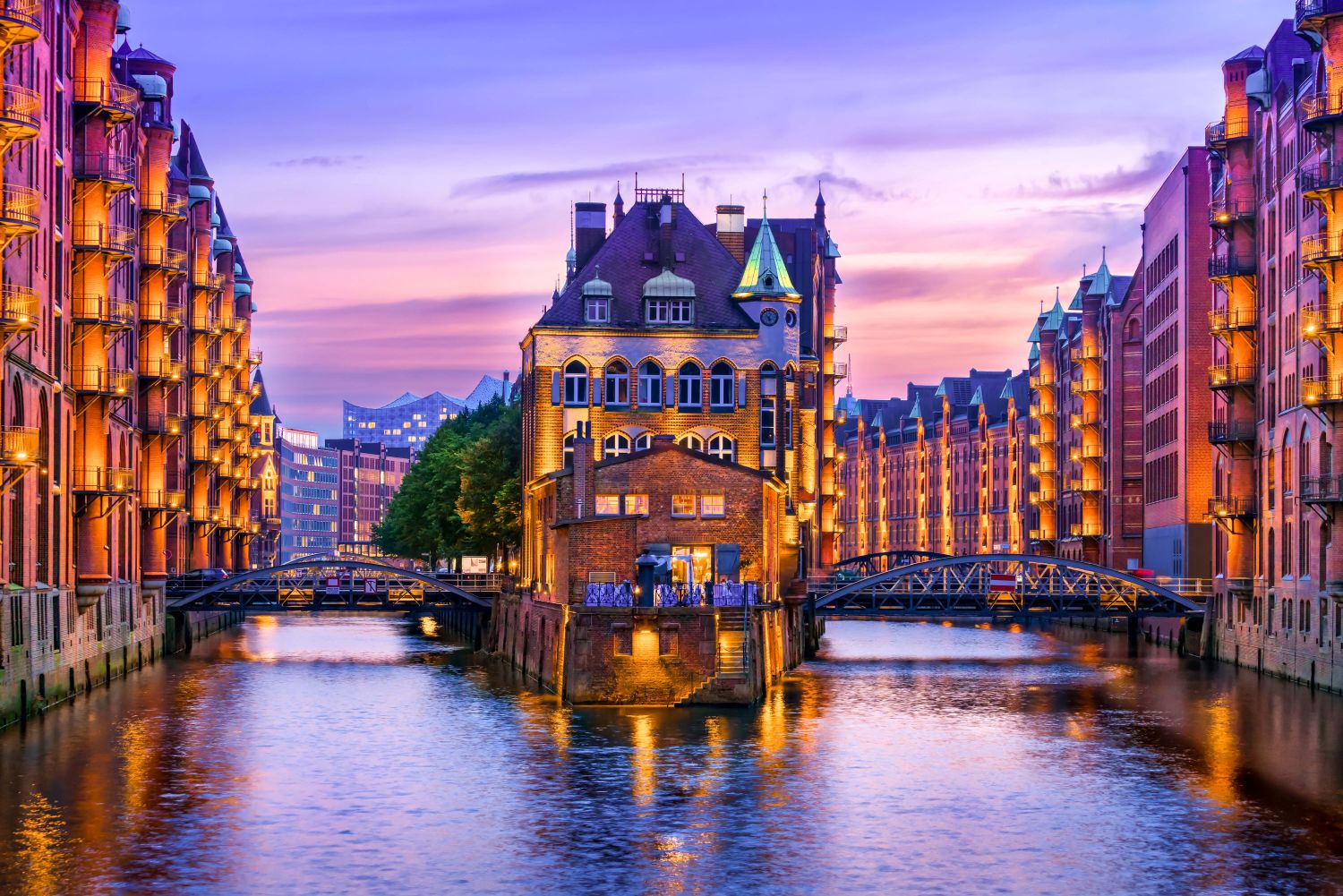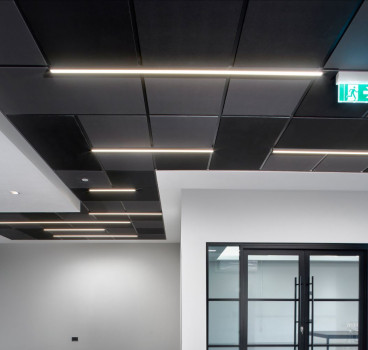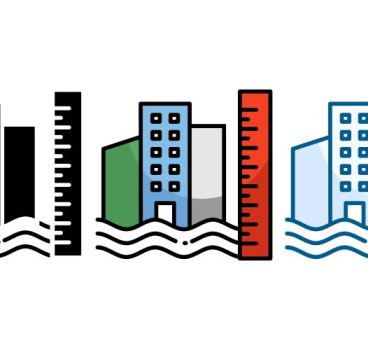Designing infrastructure for life on the sea
The threat of rising sea levels and increased flooding is no longer a distant concern - it’s a present reality, a real threat for many coastal communities around the globe. As urban populations continue to grow, particularly in vulnerable coastal areas, the need for innovative and sustainable solutions becomes ever more critical. It is the reason why "Water-based cities" now offer a compelling vision for the future, moving beyond the concept of isolated floating homes to more comprehensive urban designs that integrate with and adapt to aquatic environments, writes John Ridgeway.
This is not just about building on water, but designing entire ecosystems with water, encompassing everything from flood-resistant infrastructure to intricate canal systems and amphibious architecture. It's a shift from fighting the water to working with it and it will demand a radical reimagining of how we plan, build and live.
Several factors are driving the need for water-based urban solutions. Global sea levels are now rising at an accelerating rate, threatening to inundate coastal cities and displace millions of people.
Climate change is also intensifying extreme weather events, leading to more frequent and severe floods, even in areas not traditionally considered at high risk. For coastal areas, which are often centres of economic activity and population growth, this is putting increasing pressure on already vulnerable regions. And in some densely populated areas, particularly island nations, land is becoming increasingly scarce, making water-based expansion a necessity.
Traditional approaches to flood defence, such as seawalls and levees, are often expensive, environmentally disruptive and can provide a false sense of security. This means that water-based urban design could offer a more holistic and adaptable approach, working with natural systems rather than against them.
Designing for a fluid future
With this background in mind, it is worth taking a look at some of the key concepts and technologies that are shaping the development of water-based cities. They include amphibious structures, designed to function both on land and water. They can rest on the ground during normal conditions, but rise and float during floods, adapting to changing water levels.
Several projects around the world have demonstrated the feasibility of amphibious houses, often using lightweight construction and flotation systems. Buildings can be constructed on buoyant foundations that rise with the water level, preventing flood damage. This provides resilience to both gradual sea-level rise and sudden flooding, it minimises displacement of communities and reduces the need for large-scale land reclamation.
Projects like the IJburg floating neighbourhood in Amsterdam (pictured at top of page) demonstrate the potential for creating entire residential communities on water. Floating platforms can also be used for agriculture, providing food security in areas with limited land. Furthermore, essential services like power plants, water treatment facilities and transportation hubs can be built on floating platforms, reducing their vulnerability to flooding.
Such developments can be used to create new land areas in densely populated coastal cities. They also offer flexibility and adaptability to changing needs, can be relocated if necessary and they reduce the impact on existing land-based ecosystems.
Canal systems and waterways also offer solutions for water-based cities. Canals are not just for transportation - they can be integrated into the urban fabric to manage water, provide recreational spaces and enhance the aesthetic appeal of a city.

Venice, Italy, is a classic example of a city where canals are integral to its identity and function, though also a cautionary tale about the challenges of rising water. Hamburg’s HafenCity, in Germany,(Pictured above) is also a modern example of urban redevelopment that integrates canals and waterways to create a vibrant and flood-resilient district.
Integrated flood management:
Looking towards the future, water-based cities will require a holistic approach to flood management that combines engineered solutions with natural systems. Wetlands, mangroves and other natural ecosystems can act as natural buffers against flooding, absorbing wave energy and storing excess water.
At the same time, we will need permeable surfaces allow rainwater to infiltrate the ground, reducing runoff and replenishing groundwater supplies. Creating designated areas for water storage, such as parks that can double as flood basins, can help manage peak flows during heavy rainfall.
We will also need early warning systems for such structures. Advanced monitoring and forecasting systems can provide timely warnings of impending floods, allowing for better preparedness and evacuation.
All this means that building on water will require careful consideration of materials and construction techniques to minimise environmental impact and ensure long-term durability. Lightweight materials will be needed to reduce the load on floating structures and minimise the need for extensive foundations.
Materials must also be able to withstand the corrosive effects of saltwater. Prioritising renewable and recycled materials, is another factor, to reduce the environmental footprint of construction. This paves the way for prefabricated modules, which can be assembled on-site, reducing construction time and waste.
However, while water-based cities offer a promising vision for the future, there are also significant challenges and considerations that need to be addressed. Developing and implementing water-based infrastructure can be expensive, requiring significant upfront investment. Designing and constructing structures that can withstand the dynamic forces of water also requires advanced engineering expertise.
We also need to look at existing building codes and regulations, that may not be adequate for water-based construction. Furthermore, careful planning will be needed to minimise the potential environmental impacts of water-based development, such as disruption to aquatic ecosystems and changes in water flow patterns.
Looking ahead, gaining public acceptance for living on water may require overcoming cultural biases and addressing concerns about safety and stability. Water-based structures may also require more frequent maintenance than land-based structures due to the corrosive effects of water and the dynamic nature of the aquatic environment.
The future of urban living
Water-based cities clearly represent a paradigm shift in how we think about urban development. They offer a vision of a future where humans live in harmony with water, rather than in constant conflict with it. By embracing innovative design and engineering and by working with natural systems, we can create resilient, sustainable and vibrant urban environments that thrive in the face of rising sea levels and increased flooding.
This is not just about survival - it's about creating a new kind of urbanism, one that is both adaptive and enriching. Imagine cities where transportation is seamless between land and water, with boats, ferries and water taxis integrated into the urban fabric.
This is about homes and businesses that float gently on the water, offering stunning views and a unique connection to the natural world. This is where canals and waterways can provide recreational opportunities, enhance biodiversity and create a sense of tranquillity. This is about a city that is a living, breathing ecosystem, with wetlands, mangroves and other aquatic habitats integrated into its design.
The challenges are significant, but the potential rewards are even greater. Water-based cities offer a path towards a future where humanity can not only survive, but also thrive in a world increasingly shaped by water. It's a future that demands creativity, collaboration and a willingness to embrace a new way of living. Are we up to it, I wonder.
Additional Blogs

When fire breaks out who really knows the system
The story that caught my attention recently wasn’t about fire growth or building loss, it was about confusion. Specifically, the confusion faced by the fire service when arriving at buildings...
Read moreThe design and development of Nexus Layouts
When Zentia set out to rethink the suspended ceiling, the brief was clear: deliver greater creative freedom for designers, more distinctive visual identity for clients, and a solution that could keep...
Read more

The 100-year construction project or why longevity Is the new sustainability
For decades, the construction sector has defined sustainability through metrics such as operational energy, embodied carbon, material efficiency and circularity. These measures remain vital, but a...
Read more